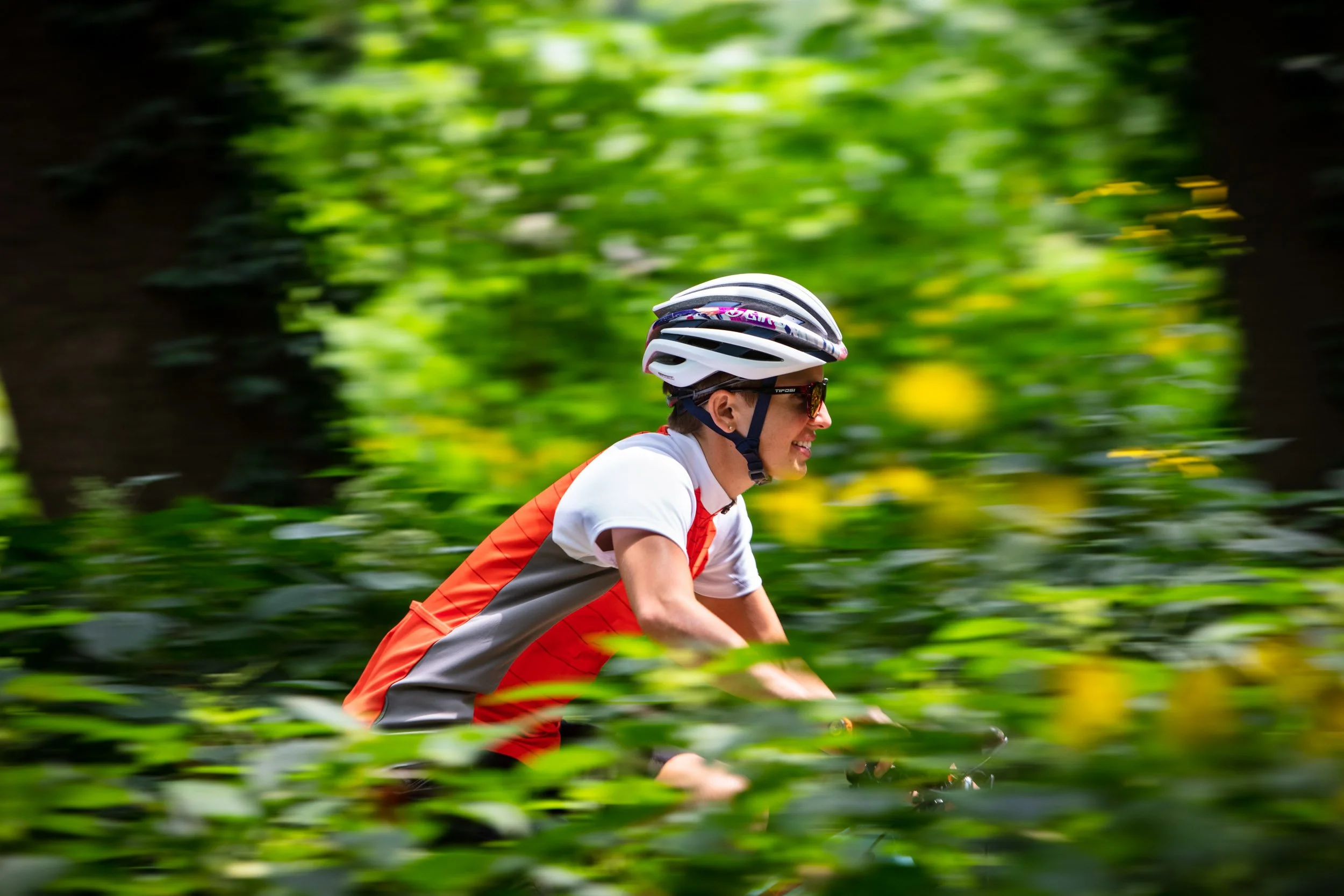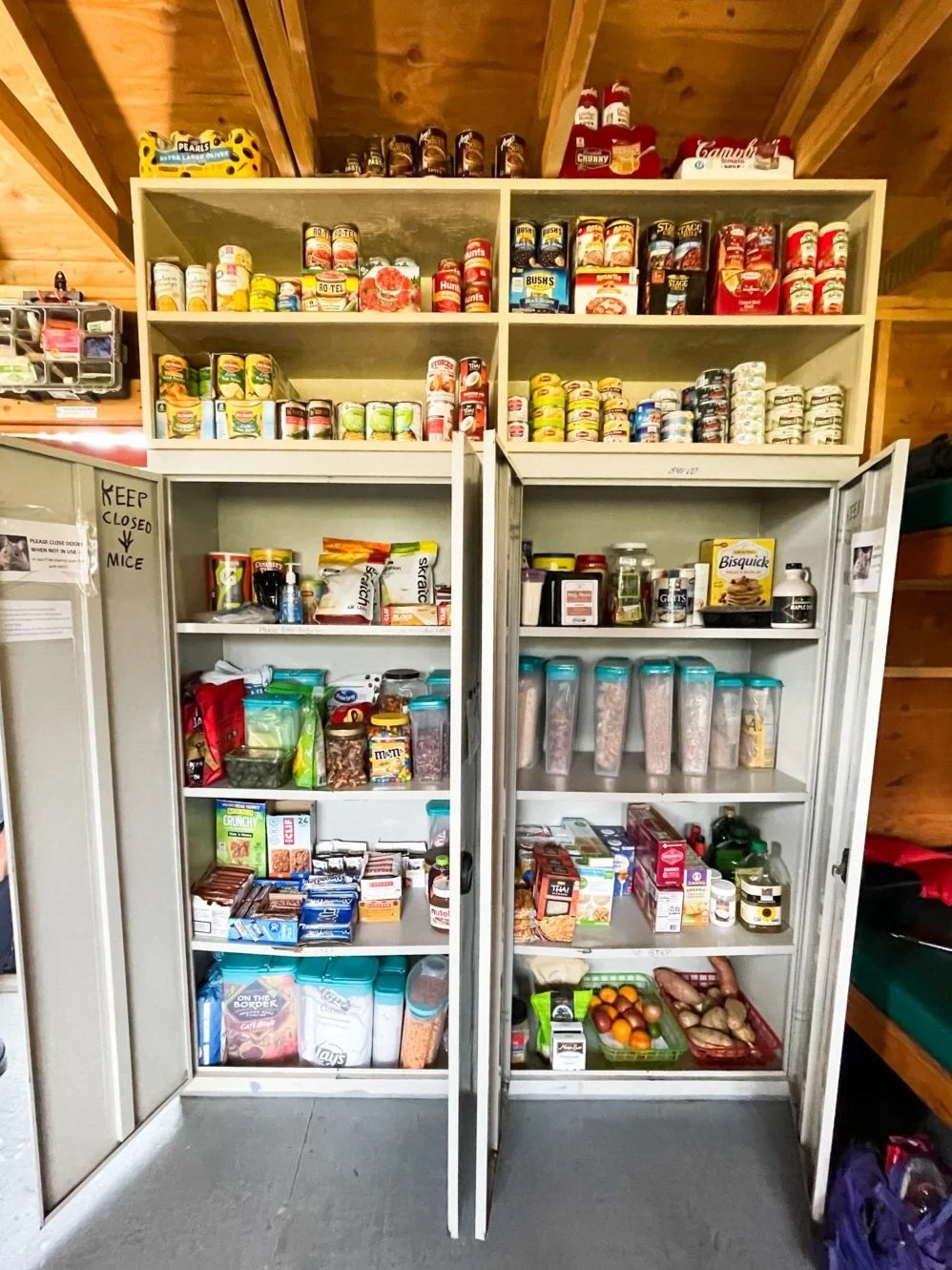Performance Nutrition for Cyclists
Learn how to fuel for your best performance
The number one factor reducing your cycling performance is under-fueling. This is not surprising —exercise tends to reduce your appetite and eating during intense workouts can be uncomfortable. Also, in endurance sports in particular, body weight plays a big role in performance, so many athletes intentionally try to curb their intake in the belief it will make them faster, but this actually reduces performance in the short and long term. Follow the advice below to fuel well and improve performance.
How Much and What Should I Eat During a Ride?
Short Answer
Eating before and during your ride will substantially increase your performance, especially as the ride gets longer. Eat small, easy to digest sweet foods frequently when riding for more than an hour. Eat only what your stomach can tolerate without discomfort. Common choices are bananas, gels, chews, fruit snacks, and candy.
To learn about Hydration for Cyclists click here.
Longer Answer
When we talk about performance nutrition, we’re focused only on what will make your muscles work harder for longer. This is not about a balanced nutritious diet overall, which you should eat for normal meals. As such, performance fuel should be almost exclusively carbs. Your body will not use protein and fat as energy during exercise and they can even slow digestion. However, protein shakes or bars are highly recommended after exercise to build and repair muscle and tissues, as well as healthy fat sources like nuts and fish.
For very long events, especially ultra-cycling races (8+ hours), a more balanced approach is warranted with foods containing mostly carbs (simple and complex), some protein, and some fat.
Make a plan to eat every 20-30min, or more frequently. Some computers have an “eat alarm” to remind you. Your choices should be based on the length and intensity of your ride, the foods’ macro nutrient profile (carbs, protein, fat), taste preferences, stomach tolerance, convenience, palate fatigue, and cost. General recommendations are below, but experiment to find your best plan.
1-3 hour rides: Eat something high in carbohydrates that’s easy to digest. Liquids and gels digest the fastest. Energy bars and sandwiches are slower to digest and may cause upset stomach while riding. This can be avoided by eating smaller amounts more frequently.
Goal: 30-60g of carbs per hour.
3-6+ hour rides: Eat more solid foods early on and gradually switch to softer foods like chews and gels.
Goal: 60-90g of carbs per hour.
1-5 hour races: Eat softer foods and high performance energy products since the intensity is much higher and upset stomach is more likely.
Goal: 60-90g of carbs per hour.
As always, base the amount of carbs on your tolerance and the nature of the ride. To calculate how much to eat on a particular ride, use this formula: approximate number of hours of ride X your goal carbs per hour/the amount of carbs in each type of food you'll be eating: hours x carb goal ÷ carbs in food. For example:
Ride time is 4 hours. I want to consume 60 grams per hour of carbs. I like Clif Shots and bananas and fig bars.
4 x 60 = 240 grams total for the ride.
Based on the carb content for each serving of these favorites:
You should consume at least:
2 bananas
3 Shots
3 servings of fig bars
This equals 237g of carbs. This seems like a lot, but keep in mind this is spread over 4 hours. Using an alarm to remind you to eat at regular intervals will help you stay on track.
Note that we should always calculate based on grams of carbs, not calories. Foods that are predominately carbs can also contain lots of fat and protein. And since fat is 9 calories per gram, compared to 4 calories for carbs and protein, the majority of calories can often be from fat.
What Should You Eat
Your ride food choices should be based on length and intensity of your ride, macro nutrient profile, taste preferences, stomach tolerance, convenience, palate fatigue, and cost. Energy products are convenient and provide only what you need to perform, (high in carbs, low in fat and protein), but can be expensive. They are also highly processed which isn’t particularly healthy. Again, this is about maximum performance, not overall nutritional value, so you should only eat these products when training and racing. Casual or endurance rides under 3 hours can be fueled with more real food as long as your stomach can tolerate it. Experiment with various choices during training to find the right balance of these factors for you.
One important thing to note here is that in order to process more than 60g per hour, you need to eat two forms of carbohydrates: glucose and fructose. This is because there are two sugar transporters (SGLT1 and GLUT5) in the gut and eating only glucose, the most common form of carbohydrate, can limit absorption to about 60g per hour. Fructose, most commonly found in fruit, has its own separate transporter in the gut. With this second pathway, about 30g more can be absorbed, bringing the total to about 90g per hour. (In actual practice, these limits have been shown to be higher, especially in elite athletes. This is very much an evolving field).
Many energy products will contain both glucose and fructose in a 2:1 or 1:0.8 ratio in order to take advantage of these two transporters. Very often they will be listed as maltodextrin and fructose. Maltodextrin is a complex form of glucose and uses the same transporter, SGLT1.
Below you’ll see some popular carb-rich foods on a scale of digestibility. On one end are bagels and granola bars. These are high in complex carbs and have more fiber that slow digestion. On the other end are simple sugars and energy foods that absorb quickly, but are very processed, very sweet and expensive. For long rides and races, it’s good to have a variety of choices.
Before and After Training
Beginning your rides well fueled is the first step to high performance. Eating a balanced meal the day before and 2-4 hours before your ride will top off your blood glucose and your muscle glycogen (stored glucose) and give you a head start to having the energy you’ll need. Because you have time to digest everything at rest, complex carbs and high fiber foods are ideal, along with protein and fat. By the time you start your ride, you want everything out of the stomach to avoid discomfort. Good choices 2-4 hours from before your ride (usually breakfast) would be oatmeal or pancakes: high in carbs, low in protein and fat. Not so good would be bacon and eggs: high in protein and fat, low in carbs.
After your ride, your main goal is to replenish glycogen and glucose with carbohydrates, and rebuild and repair muscles with protein. Your body will absorb these macronutrients the quickest within 30-60min of exercise, but you’ll be fully replenished by the next day assuming you eat normal meals. If you plan on exercising again within 12 hours, or you have multiple days of long rides planned, like a training camp or stage race, it’s a good idea to consume carbs and protein early and often right after each ride.
Bonking
Under-fueling can reduce performance, but bonking will usually end your ride. When you’ve completely run out of energy, you’ve bonked. This is a different sensation than just severe fatigue, which can also be present. Bonking means you’ve depleted all the glucose in your bloodstream and all the glycogen in your muscles and liver. You have no more energy left and just want to sit down and do nothing, and for the most part are incapable of more exercise. You may also have a headache and be dizzy or confused, and you will generally feel awful.
If you think you have or are about to bonk, or just generally have low energy, immediately eat or drink something sweet that is quick to digest. After a little while you should start to feel somewhat better, but you may or may not be able to get back on the bike for some time.
The good news is, bonking is entirely preventable. First, consume carbs frequently and in sufficient quantities. Second, ride at an intensity that you’ve trained for and can be supported by your carb intake.
Severe fatigue is different than bonking in that your muscles are very sore and you feel more discomfort the harder you pedal. Severe fatigue may also be accompanied by leg cramps. For the most part, this kind of fatigue is due to your ride exceeding your training in either intensity or duration or both.
Weight Loss and Cycling
While endurance exercise can burn some fat to lose weight, significant weight loss comes from your day-to-day diet. Which is why I tell athletes to chase performance, not weight loss on the bike. Riding under-fueled will not burn more fat, it will only reduce performance. And reduced performance in a workout means you don’t hit targets, and when you don’t hit targets, your training is sub-par, so you don’t get faster.
If weight loss is a high priority, focus on fueling properly for rides, but adjust your meals the rest of the day to elevate healthy whole foods and reduce sweet and highly processed foods, including alcohol. For professional advice or help with meal planning we can connect you to a registered dietitian that specializes in nutrition for athletes. Contact us anytime here for their information.
What Eric Eats
For most rides over an hour, I tend to eat a combination of Clif chocolate gels, Skratch chews, Clif Bloks, and sometimes SIS Beta Fuel gels, though these can change season to season. If it’s a casual pace, I’ll often eat a banana, fig bars or a pb&j sandwich. It really depends on the length and intensity of the ride.
For very long rides or races of 75-200 miles, I’ll usually take one or two bottles of Skratch Super High-Carb drink mix. These can provide 100g of carbs per large bottle, which is a lot. This depends on how hot it is though - when hydration is hard to keep up with, these high carb mixes can significantly slow fluid absorption. In this case, I’ll only use the Skratch or Precision Hydration mixes and eat my carbs instead.
Sometimes for big events I’ll make rice bars or energy balls from the Feed Zone Portables cookbook. They taste great and can be fairly nutritious while also providing lots of complex carbs, but they can be tricky to eat while riding. Again, it’s about real food and complex carbs vs convenience and speed of absorption.
I don’t have a bullet-proof stomach, but I can usually get up to about 70-80g of carbs per hour when necessary. I’ve worked to train my gut to do this though. I often get palate fatigue with all the sugary products, though over time and training I tolerate them better than I used to. I haven’t found a great energy product that’s savory yet, but I keep looking for one.







